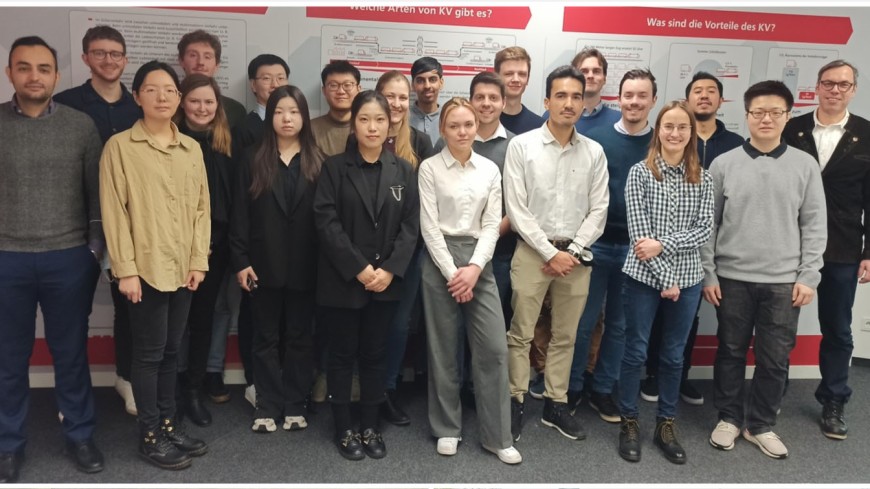Visiting the “Innovation Lab on Combined Transport” and the Autobahn GmbH
2023/02/15

The transfer of our research results in the Combined Transport Innovation Lab at the House of Logistics and Mobility, Frankfurt am Main, thrives on exchange – including and sometimes especially with our students, who had the opportunity to get to know the showroom and HOLM together with Prof. Elbert on 1 February 2023.
The experts of tomorrow were able to experience the interactive showroom with its three systematically developed stations: the information wall supplemented the knowledge about CT already obtained in the courses; they were able to see our current research results on the monitors provided and – last but not least and always the center of great popularity: the interactive “game” table with typical examples of data-driven planning. There, the students tested their acquired understanding of the multi-link transport chain of CT in two brainteasers, once as a forwarder and once for an operator.
They were then welcomed by Prof. Gerd Riegelhuth, Katharina Nagel and Dominik Gurske in the ELISA showroom at the HOLM. Prof. Riegelhuth gave the students exciting insights into the tasks and organization of the Autobahn GmbH with regard to future-oriented solutions and approaches in the field of data transfer, automated driving and also autonomous driving, which was met with curiosity by the young people.
Mr. Gurske then presented to the students the research project “Electrified, Innovative Heavy Traffic on Motorways” (ELISA), which is being carried out together with the TU Darmstadt. The regional test route of this project was recently extended by a further 7 km and offers an insight into future-oriented and sustainable solutions. These could also be a resource-saving implementation for the pre- and post-carriage of CT. While road and rail freight transport are occasionally portrayed as direct competitors, today's figures suggest that neither will be able to handle the traffic volumes of the future on their own. In this respect, the outlook offered to the students on possible joint solutions and bridging technologies, such as trucks driving on overhead lines – perhaps also in platoons – was particularly impressive.
We would like to thank Katharina Nagel and Torben Schenkel for the successful visit, and Yuerui Tang and Eva Hartmann for the organization. We are looking forward to the next time!

